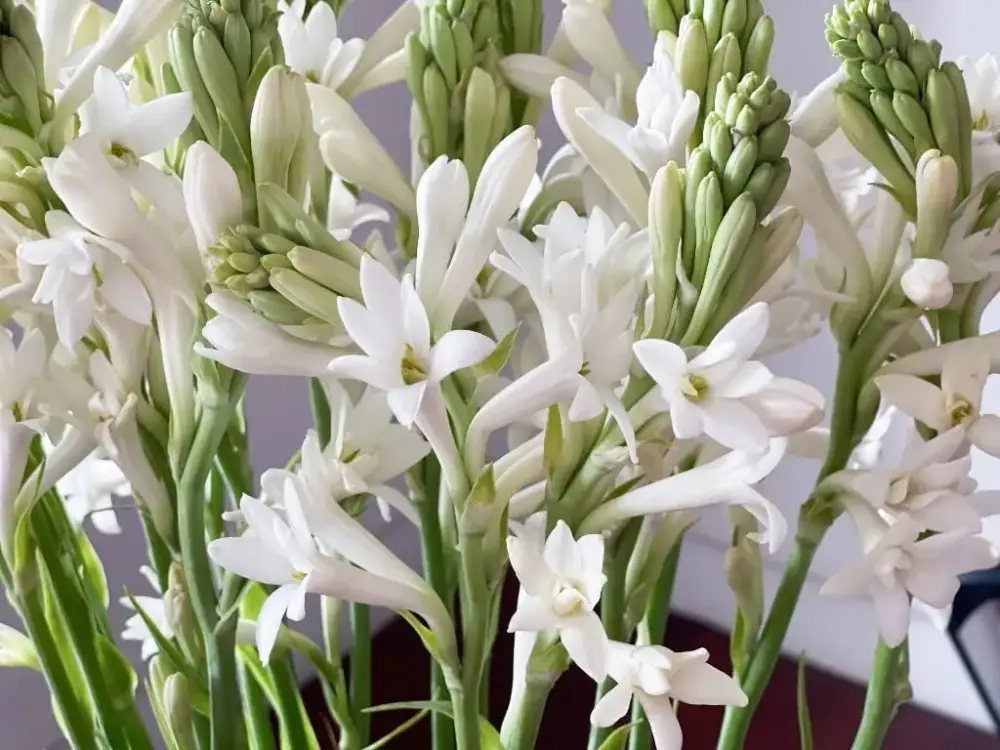In the structure of a perfume, the middle note, or heart note, forms the emotional core of the fragrance. It bridges the freshness of the top notes and the depth of the base. Among the most powerful and emotionally resonant heart notes is tuberose—a lush, creamy white flower known for its intoxicating and unforgettable aroma. In this article, we explore how tuberose works as a middle note in perfumery, and why it continues to captivate perfumers and fragrance lovers alike.
What Is Tuberose?
Tuberose (Polianthes tuberosa) is a night-blooming flower native to Mexico, known for its potent, creamy, and sweet fragrance. Unlike most florals, tuberose has a complex character that ranges from buttery and smooth to green, spicy, and even slightly animalic. It is often categorized as a white floral, along with jasmine, gardenia, and orange blossom.
Tuberose as a Middle Note
1. The Emotional Core
As a middle note, tuberose emerges after the top notes evaporate—often around 10 to 30 minutes after application. It becomes the central theme of the perfume, carrying the emotional story and identity of the fragrance.
Tuberose is:
Intense and seductive
Creamy, rich, and sweet
Mysterious and long-lasting
Warm with a narcotic edge
Its powerful presence makes it ideal for fragrances aiming to express sensuality, romance, or bold femininity.
2. Balancing Act
Tuberose often balances other notes in the heart of a perfume. It can:
Soften spicy or green accords
Enrich delicate floral bouquets (like jasmine or orange blossom)
Stand alone as a signature floral focus
In compositions where tuberose plays the lead role, it often becomes the star of the show, radiating throughout the fragrance’s lifespan.
The Symbolism of Tuberose
Tuberose has long been associated with:
Luxury and opulence
Femininity and sensuality
Mystery and seduction
In traditional Indian culture, it is used in weddings and rituals. In Western history, it was once thought to be so sensually overwhelming that young women were discouraged from smelling it after dark.
Emotional and Psychological Impact
As a heart note, tuberose has deep emotional resonance:
Evokes passion, romance, and intimacy
Can feel nostalgic and comforting, or dangerously seductive
Triggers strong sensory memories
Its narcotic quality affects mood in a profound way, often creating a hypnotic aura around the wearer.
Tuberose in Famous Perfumes (as a Heart Note)
Fracas by Robert Piguet – The ultimate tuberose heart fragrance, lush and unapologetically feminine
Carnal Flower by Frederic Malle – Tuberose in full bloom with green and tropical nuances
Do Son by Diptyque – A soft, airy interpretation centered on tuberose and jasmine
Gucci Bloom by Gucci – Tuberose at the heart, blended with jasmine and Rangoon creeper
Michael by Michael Kors – A bold, creamy tuberose heart note framed with woods and incense
Pairing Tuberose in the Heart Note Layer
Tuberose blends well with:
Jasmine and Ylang-Ylang – For deep floral intensity
Orange Blossom and Neroli – To lighten and brighten its richness
Fruity notes (like peach or pear) – For a sweet, juicy twist
Spices (like cardamom or pink pepper) – To create contrast and edge
These combinations allow perfumers to mold tuberose into styles ranging from romantic and delicate to dark and daring.
Conclusion
Tuberose, as a middle note, is passionate, powerful, and deeply expressive. It captures attention and holds it, radiating warmth and bold femininity. Whether used alone or in combination with other floral or exotic notes, tuberose defines the soul of many iconic perfumes. As the heart of the fragrance, it speaks directly to the wearer’s emotions—evoking memories, desires, and dreams with every breath.

